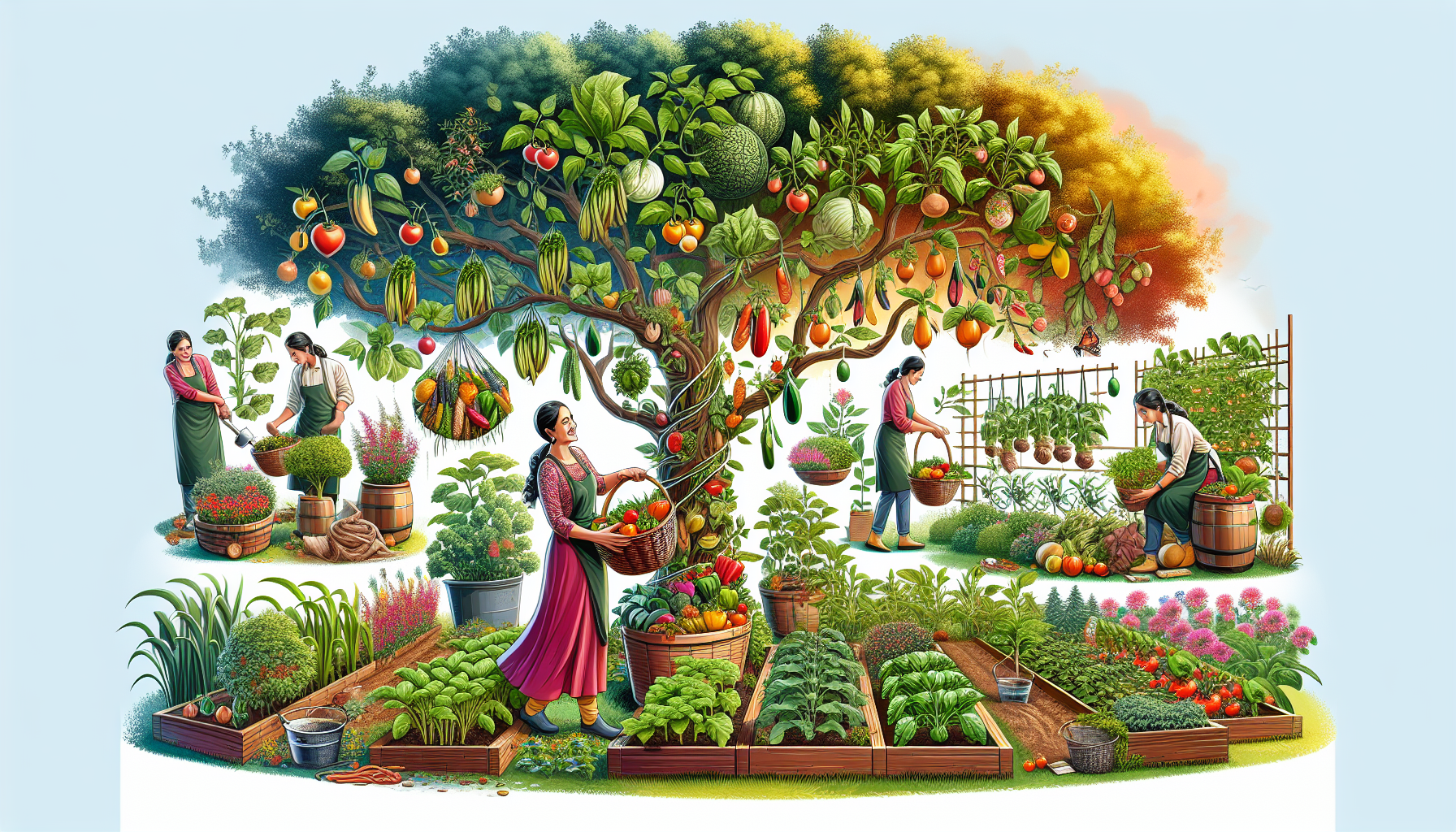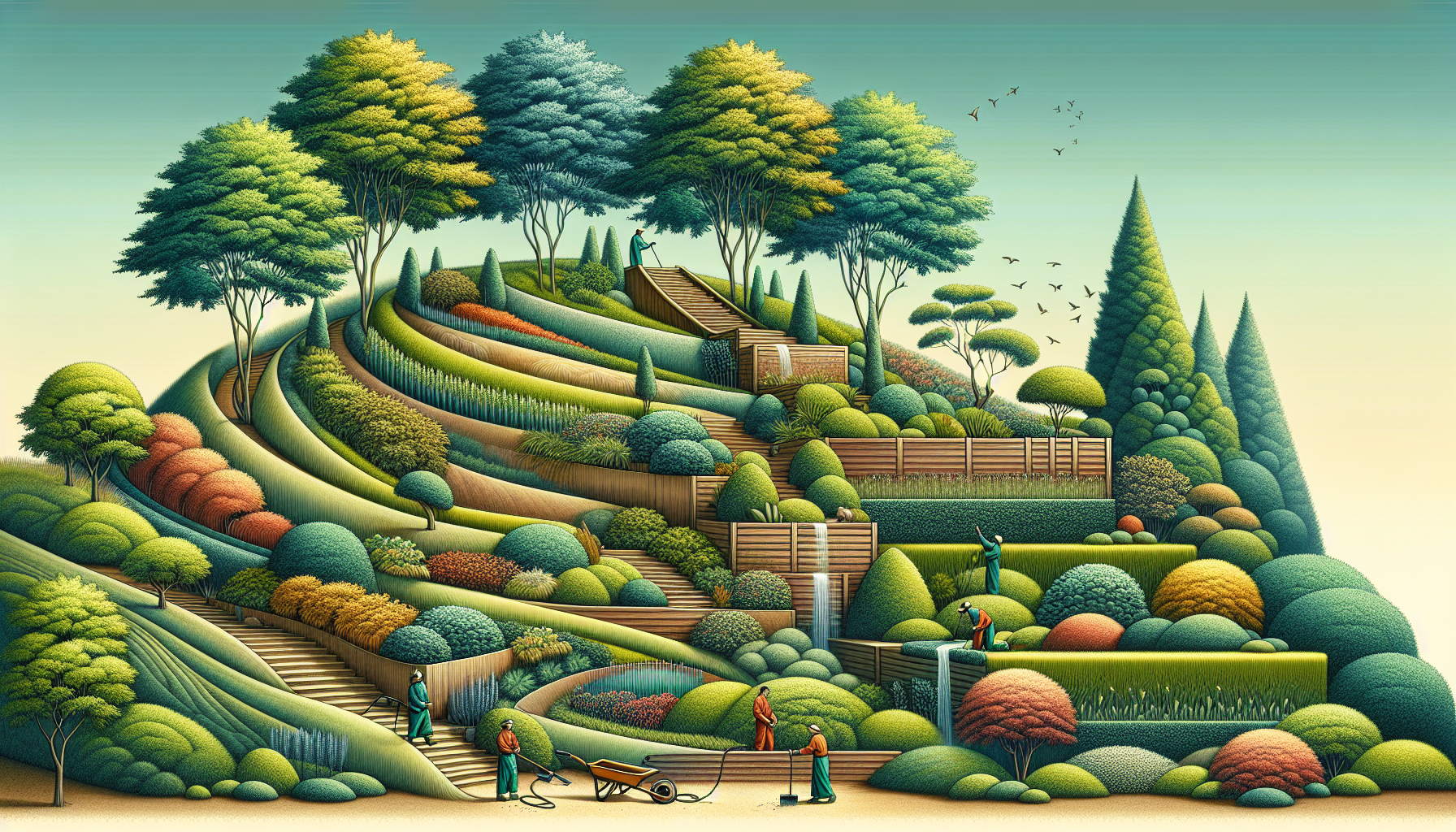Drip irrigation systems offer a smart and sustainable solution for gardeners aiming to optimize their garden’s hydration needs efficiently. This comprehensive course is designed to walk you through everything from the basics of understanding drip irrigation to the intricacies of installation, maintenance, and troubleshooting. Whether you’re a seasoned gardener or new to the concept, you’ll discover valuable insights on planning your system, selecting the right components, ensuring proper water delivery to your plants, and adapting your setup for various seasonal requirements. With a focus on conservation and effectiveness, this course is your step-by-step guide to creating a thriving garden with the aid of a well-implemented drip irrigation system.
Lesson 1

Understanding Drip Irrigation and Getting Prepared
Drip irrigation stands as a highly efficient method to water your garden, ensuring every drop counts. This system allows water to drip slowly to the roots of plants, either from the soil surface or buried below, maximizing efficiency and reducing water wastage. Embracing drip irrigation not only conserves water but also ensures your plants thrive in optimal conditions.
Assessing Your Garden’s Watering Needs
Before diving into setting up a drip irrigation system, it’s crucial to understand your garden’s specific needs. Different plants require varying amounts of water; thus, a well-thought-out plan aligns with your garden’s unique requirements, ensuring each plant receives the right amount of water.
Planning Your Drip Irrigation Layout
Planning your layout is a pivotal step. This includes mapping out your garden, noting the placement of plants, and determining the best routes for your irrigation lines. Such meticulous planning ensures an efficient system design, tailored to your garden’s specific needs.
Tools and Materials Required
Gathering the right tools and materials beforehand simplifies the installation process. Essential items include:
- Drip irrigation tubing
- Emitters and drippers
- Tube fittings
- Water source connector
- Filter and pressure regulator
- Stakes and supports
Equipping yourself with these tools and materials ensures you’re well-prepared to install a drip irrigation system that meets your garden’s watering needs.
Why Choose Drip Irrigation for Your Garden
Drip irrigation offers numerous benefits, making it an excellent choice for gardeners aiming to optimize their water usage and ensure their plants’ health. This system’s precision directly impacts the root zone, reducing evaporation and runoff, and significantly conserving water. Moreover, it minimizes weed growth and lowers the risk of plant diseases by keeping foliage dry.
Creating an Eco-friendly Garden
By adopting drip irrigation, you’re not only ensuring your plants receive adequate moisture but also contributing to a more sustainable environment. This method aligns perfectly with eco-friendly gardening practices, emphasizing water conservation and the Well-being of your plants.
Embracing drip irrigation as part of your gardening practice ensures efficient water use and contributes to the health and productivity of your garden. With the right preparation, tools, and a well-thought-out plan, you can easily install a drip irrigation system that serves your garden’s needs, ultimately creating a thriving and sustainable garden space.
Lesson 2

Setting Up Your Drip Irrigation System
Setting up a drip irrigation system in your garden is a fantastic way to ensure your plants get the hydration they need directly at their roots, where it matters most. Drip irrigation systems are praised for their efficiency, conserving water while promoting healthy plant growth. Whether you have a vegetable garden, a flowering oasis, or a mix of both, installing a drip irrigation system can significantly improve your gardening success.
Installing the Main Water Line
The first step in setting up your drip irrigation system is to install the main water line. This line connects your water source to the drip system, laying the foundation for a network that will feed all your plants. Ensuring a secure and leak-proof connection here is critical for the overall efficiency of your system.
Assembling Drip Lines and Emitters
Next, you’ll want to strategically lay out your drip lines along the areas where your plants are located. Choosing the right emitters is key—they regulate how much water each plant receives. It’s essential to select emitters based on the specific water needs of your plants, which you assessed in the planning phase.
Strategies for Watering Different Types of Plants
When setting up your drip irrigation, it’s crucial to consider the diverse needs of your garden. Some plants might require more water than others, and the placement of emitters and the selection of drip lines will reflect this. By customizing the setup for different areas of your garden, you ensure that each plant gets exactly what it needs to thrive.
Incorporating Timers and Sensors for Automation
To truly make your drip irrigation system efficient and hassle-free, incorporating timers and sensors is a brilliant move. Timers can automate the watering process, ensuring your garden is watered at the best times of day, even when you’re not around. Soil moisture sensors can adjust the watering schedule based on real-time needs, saving water and preventing over or under-watering.
Embracing a drip irrigation system for your garden is not just about saving water; it’s about creating the most conducive environment for your plants to flourish. By following these steps and considering the specific needs of your garden, you’ll be well on your way to enjoying a lush, thriving outdoor space that’s both beautiful and sustainable.
Lesson 3

Maintenance, Troubleshooting, and Optimization of Your Drip Irrigation System
Ensuring your drip irrigation system is running smoothly is key to maintaining a healthy, thriving garden. Regular maintenance, timely troubleshooting, and continuous optimization of your drip irrigation setup can significantly extend its lifespan and efficiency. Proper care also leads to substantial water conservation and fosters a sustainable environment for all your plants.
Routine Maintenance Tips for Drip Irrigation Systems
Regular checks and cleanings are vital to keep your drip irrigation system in top-notch condition. Periodically inspect for any clogs or leaks in the tubing and emitters. Cleaning filters and checking pressure regulators are also essential steps to prevent any issues that could hinder the system’s performance.
Troubleshooting Common Issues
Even with the best care, problems can arise. Common issues include clogged emitters, leaks in the tubing, or irregular water pressure. Identifying and addressing these problems promptly can prevent larger issues down the line. For clogged emitters, a simple cleaning might suffice, while leaks might require patching or replacing sections of the tubing.
Optimizing Water Usage and System Efficiency
Optimization of your drip irrigation system ensures your garden is watered efficiently without waste. Consider integrating smart controllers that adjust watering schedules based on weather conditions or soil moisture sensors that provide water only when necessary. These technologies can significantly reduce water usage and ensure your plants receive the right amount of water.
Winterization and System Care
For gardeners in colder climates, preparing your drip irrigation system for winter is crucial to prevent damage. Draining the system to eliminate water that might freeze and damage the tubing and components is a necessary step. Additionally, covering exposed parts can protect them from harsh winter conditions.
Taking proactive steps to maintain, troubleshoot, and optimize your drip irrigation system not only empowers you to garden more effectively but also contributes to a more sustainable and ecologically friendly gardening practice. By following these guidelines, you can enjoy a lush, vibrant garden that reflects your hard work and dedication to sustainable gardening.
Drip irrigation system installation and maintenance is an invaluable skill for anyone looking to foster a vibrant and sustainable garden. Throughout this course, we’ve explored the essentials of setting up, optimizing, and caring for your drip irrigation system, ensuring it meets your garden’s unique needs while conserving water and promoting plant health. Now, as you venture into practical application, remember the principles and techniques shared. To assess your understanding and readiness to implement a drip irrigation system in your own space, a 10 question quiz awaits below. It’s your chance to test your knowledge and solidify your grasp on creating an efficient and eco-friendly garden irrigation setup.
Test Your Knowledge With this short Quiz
Click here to copy your score to share on facebook!







